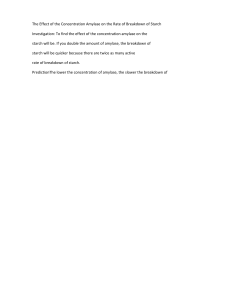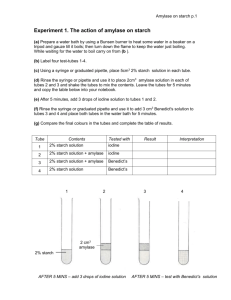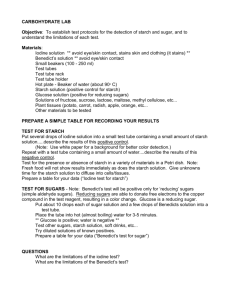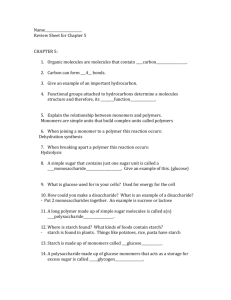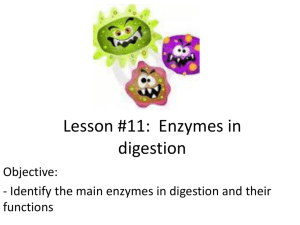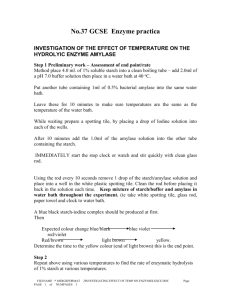Experiment 1. Discussion
advertisement
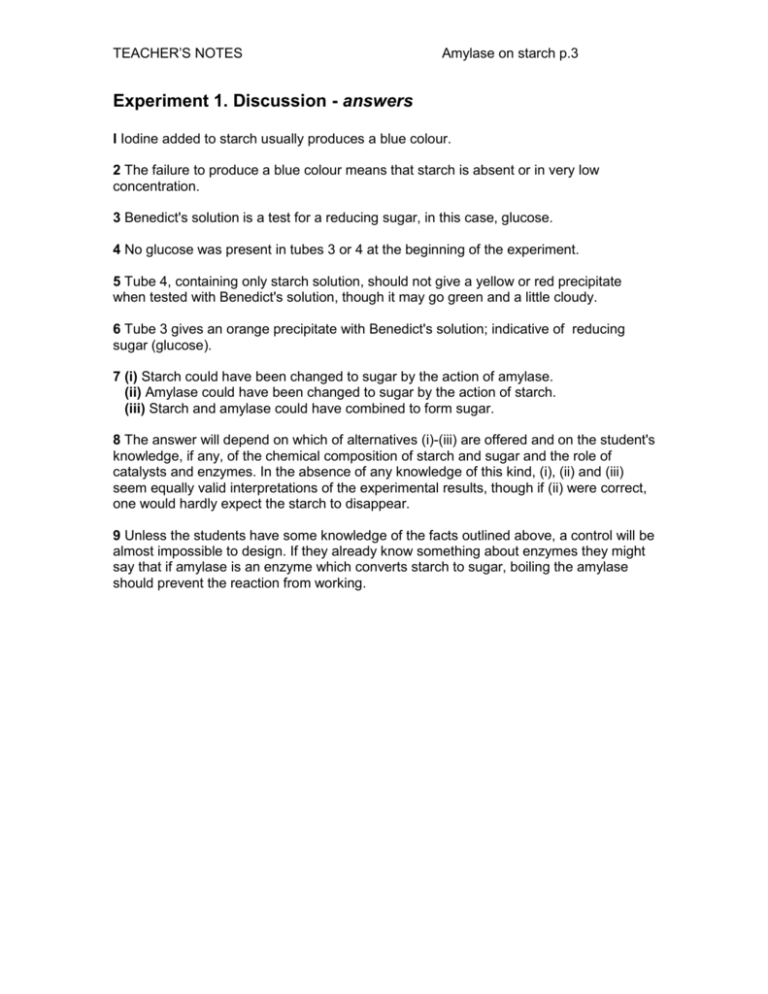
TEACHER’S NOTES Amylase on starch p.3 Experiment 1. Discussion - answers I Iodine added to starch usually produces a blue colour. 2 The failure to produce a blue colour means that starch is absent or in very low concentration. 3 Benedict's solution is a test for a reducing sugar, in this case, glucose. 4 No glucose was present in tubes 3 or 4 at the beginning of the experiment. 5 Tube 4, containing only starch solution, should not give a yellow or red precipitate when tested with Benedict's solution, though it may go green and a little cloudy. 6 Tube 3 gives an orange precipitate with Benedict's solution; indicative of reducing sugar (glucose). 7 (i) Starch could have been changed to sugar by the action of amylase. (ii) Amylase could have been changed to sugar by the action of starch. (iii) Starch and amylase could have combined to form sugar. 8 The answer will depend on which of alternatives (i)-(iii) are offered and on the student's knowledge, if any, of the chemical composition of starch and sugar and the role of catalysts and enzymes. In the absence of any knowledge of this kind, (i), (ii) and (iii) seem equally valid interpretations of the experimental results, though if (ii) were correct, one would hardly expect the starch to disappear. 9 Unless the students have some knowledge of the facts outlined above, a control will be almost impossible to design. If they already know something about enzymes they might say that if amylase is an enzyme which converts starch to sugar, boiling the amylase should prevent the reaction from working.
